Which Games Are They?
Solitaire card games played with a traditional deck of playing cards have existed for decades, going back as far as the 19th century. But there’s no doubt that the arrival of the personal computer into office spaces and homes has had an enormous impact in introducing these classic games of patience to the masses, and in popularizing them. Arguably the single biggest reason for this is Microsoft. Microsoft first began packaging a simple version of Klondike Solitaire with their operating systems with Windows 3.0, which was the third major release of Microsoft Windows, and came out in 1990. At the time, desktop computers had only just become a staple in homes and work-places. Part of the rationale for including a solitaire card game was to assist new users in learning how to use a mouse, and to help them become familiar with features like dragging and dropping, and the overall graphical interface of a personal computer. As Microsoft continued delivering new versions of their Windows operating system in later years, a couple of other solitaire card games were added, notably Spider and FreeCell. This development single-handedly revolutionized office-culture around the world. It’s a little known fact, but sources within Microsoft have stated that Solitaire is in fact the most used software program in the entire Microsoft family, even ahead of programs like Word and Excel. At the time, it even led to debates about whether introducing computers into the workplace would actually decrease productivity, due to real concerns that Microsoft Solitaire was leading to many hours of time wasted by employees.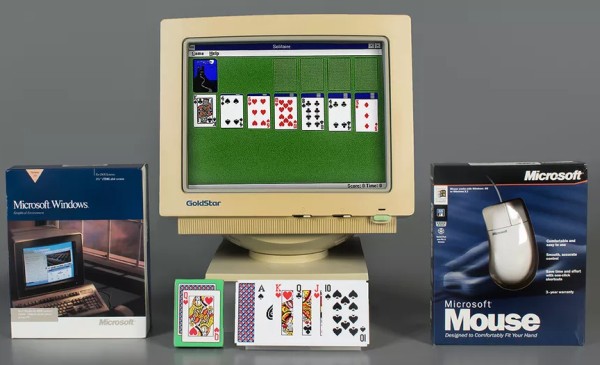
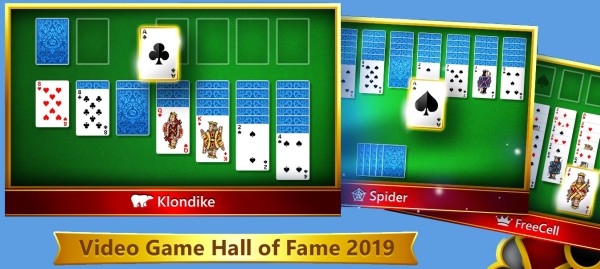
Klondike
Overview: Klondike is the solitaire game most of us will be familiar with from our personal computer, or that we’ve seen bored staff playing in the office. It’s the quintessential solitaire card game that everybody should at least try once, and is the game most people have in mind when they think of “solitaire”. Its name has its origin in the late nineteenth century gold rush in the Klondike part of the Canadian Yukon, where prospectors would play the game in order to help pass the time. It sometimes goes under other names like Canfield (in the UK), although this latter name is technically incorrect, and actually refers a different solitaire game. Game-play: Using a single deck, the aim is to arrange all 13 cards of each suit in a complete sequence from Ace through King. These sequences begin with the Ace as the foundation and build upwards, hence games like this are typically described as builder type solitaire games. Cards are placed in an area called the tableau, and the initial deal involves laying out seven piles, ranging from 1 to 7 cards on each, and with only the top card of each pile turned face up. These cards can then be arranged within the tableau by building downwards in alternating colours, and moved between columns to in order to access other cards. Only a King or column built down on a King can be transferred to a free space in the tableau. Unlike an open game where all the cards are visible and face-up from the start of the game, Klondike is an example of a closed game, because not all the cards are known, and slowly become revealed as you make them available. Variations: The most common way of using the stock is to deal three cards at a time, but many people also play with an alternative rule in which you deal one card at a time, which is sometimes called Las Vegas Solitaire, and even played as a gambling game in some casinos. This gives you access to many more cards and increases your chances of completing the game successfully. To make the game harder, you can also limit the amount of passes through the deck to just three times, or only once. My thoughts: Depending on which variation you’re playing with and how many redeals you allow, a skilled player should be able to win standard game of Klondike nearly half of the time. It is very satisfying to finish a game and get all the cards onto the foundation, but be warned, because it’s also very addictive! Once you’re familiar with how the game works, you can polish off an entire game in as little as five minutes, making it an ideal choice for a casual game to keep returning to. It’s also a game you can get better at, and for some excellent suggestions on improving your strategy, check out the article 7 Strategies to Win Solitaire.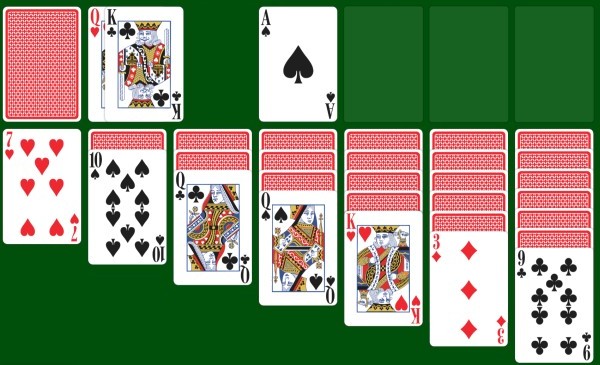
Spider
Overview: One of the two games that lurks most closely in Klondike’s shadow is Spider. Along with FreeCell, it has risen into prominence courtesy of Microsoft Windows, and chances are good that you’ve seen a version of it on your home computer along with other common games like Chess, Minesweeper, Hearts, and Spades. It is said to be a favourite of president Franklin D. Roosevelt. Many consider it to be the best solitaire game since it gives a lot of room to overcome the luck of the draw by skillful play, and comes with a good chance of winning the game. According to Gregory Trefry’s Casual Game Design, by 2005 it had outstripped Klondike and become the most played game on computers that had Microsoft Windows, largely due the increased challenge it offers over the more luck-based Klondike. Game-play: A game of Spider uses two decks of cards, and the game starts after dealing out 54 cards out in a tableau of ten piles. Like Klondike, the aim is to get cards of the same suit in order from Ace through King, but in this case there are no foundations. Columns of cards remain in the tableau until you line up a whole column of a suit in order, descending from King down through Ace, at which point they are removed from the game. Cards can be moved within the tableau in a somewhat similar fashion to Klondike, but whenever you need fresh cards, the 50 cards remaining in the stock are dealt out 10 at a time across the entire tableau. Variations: In the standard form of the game, which is the hardest way to play, you play with all four suits, and while descending columns of alternating colours can be built, you can only move a stack if they are all of the same suit. This is generally considered the more Advanced form of the game, while an Intermediate form of Spider uses two suits and makes the gameplay easier by only using Spades and Hearts. The one suit game only uses cards from a single suit, and can be considered the beginner version, and serve as an excellent introduction to Spider. Officially all spaces in the tableau must be filled before dealing from the stock, but a more relaxed form of the game is possible by removing this requirement. My thoughts: Unlike Klondike, in Spider all the building happens within the tableau, so that immediately gives it a different feel. Winning Spider, especially in its standard form, can prove quite a challenge. But it’s also one of the best solitaire games in view of the analysis and skill it allows for. New players should begin with one suit Spider, and you can always progress to the more difficult and strategic versions later. Single suit Spider is easily winnable most of the time, and is a more relaxing way to play. But even an easier game of Spider will take two or three times as long as a game of Klondike. While taking longer to play, it gives more room for skill and thoughtful play, and comes with the reward of increased chances of completing the game successfully. Microsoft’s versions of Spider incorporated a scoring system, so that players could use “undo” in order to discover hidden cards and use this to determine their choices, but with a small point penalty.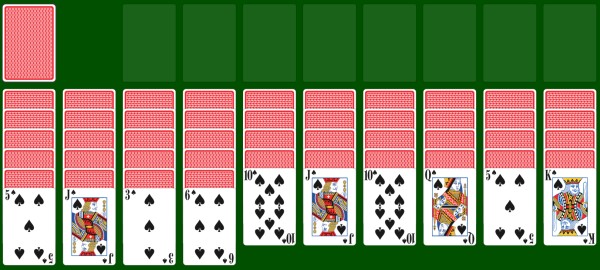
FreeCell
Overview: FreeCell emerged out of relative obscurity in 1995 as a result of its inclusion in Microsoft Windows 95. Even though it was created by Paul Alfille already as early as 1978, it was only when it was brought into the public eye with the help of Windows, that it quickly became an addictive pastime for many, and gained a loyal following. Just a few years later it was included along with Minesweeper in the chapter “Computer and Online Games” of the published version of Hoyle’s Rules of Games. Fan websites were even created for it with information about the different deals, and strategies. Game-play: At the start of the game, a single deck is dealt face up into eight columns. There are four foundation piles, and as in most solitaire games, the goal is to build cards from each suit in ascending sequence from Ace through King. But in addition to these foundation piles, there are four storage cells that can be used to temporarily store a card from the bottom of any column, and that’s where the real fun of FreeCell lies. Cards in the tableau are arranged down in alternating colours, and such sequences can be moved between columns – but only with the help of available cells – while a space created in the tableau can be filled with any card. Variations: FreeCell has inspired many variants and related game, which are too many to list. Several of these are true to the basic concept, but simply increase the number of cards in the game. For example, there is also a two-deck version called FreeCell Duplex. There is also a version with three decks and one with four decks. My thoughts: FreeCell has the distinction of being a solitaire card game that lends itself particularly well to a digital implementation. In the Windows version, each unique deal was assigned a different number, nearly all of which were solvable, and people could use this number to attempt the same deal as other players. The computer could also calculate which moves were possible and which were not. While later versions came with over a million unique deals, the original Microsoft FreeCell supported 32,000 numbered deals, dubbed as the “Microsoft 32,000”. In the hey-day of FreeCell in the mid 1990s, a crowdsourced project assigned all these deals to different people, successfully completing all but one of them. Given that all the cards are visible at the start of the game, FreeCell is an open game and you have perfect information to work with from the outset, so there are no surprises awaiting you. Winning requires sheer skill, and there is very little luck.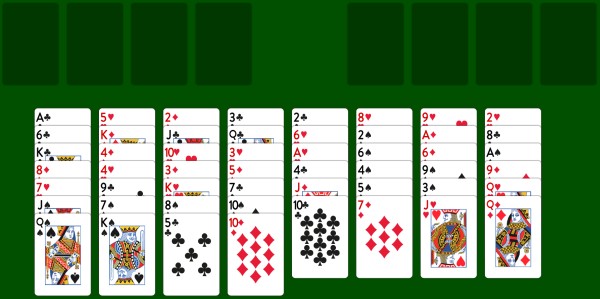
Conclusion
The above three solitaire games can all be described as builder-type games, and there are many other builder-type solitaire games that have been inspired by them or are related to them. The most popular ones besides the trilogy covered here include: Baker’s Dozen, Beleaguered Castle, Canfield, Forty Thieves, La Belle Lucie (Lovely Lucy), Scorpion, and Yukon. Each of these games is in turn a representative of its own family of games that provides variations of the same theme. So it’s worth trying each of these other titles too, to determine which ones you especially enjoy playing, and then exploring further within each family. But despite the tremendous diversity, these three reign supreme: Klondike, Spider, and FreeCell. Nearly everyone who has had a Microsoft Windows operating system on their computer at some point in their life will be familiar with one or all of these three solitaire games. This is particularly going to be true of those who were the early adopters of personal computers in homes and offices. Those who found themselves behind an office computer in the 1990s, lived in an era when video games weren’t nearly as advanced, impressive, or varied as what they were today. This was a time when social media didn’t yet exist, and when the world wide web consisted largely of text based websites that were accessed with slow dial up modems. In this environment, solitaire was the ideal companion for a lonely and boring day behind the computer, and a welcome distraction. The positive reception of Klondike, Spider, and FreeCell by this audience, has ensured that these three brands of solitaire will continue to have an enduring legacy, far beyond what even Microsoft ever imagined when first making them our friends. Almost 30 years on, these solitaire games have already stood the test of time, and will undoubtedly continue to be enjoyed by future generations. Where to play them? Head to Solitaired.com and try a game of Klondike, Spider, or FreeCell right now!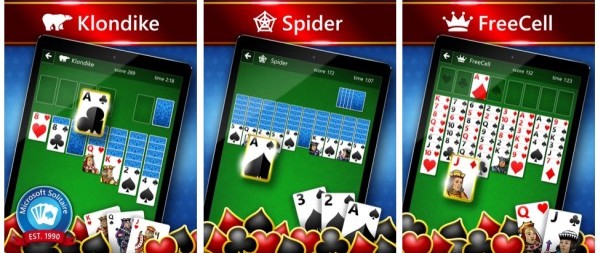
About Shuffled Ink
Shuffled Ink is a multigenerational family business that specializes in printing custom playing cards, tarot & flash cards, custom card games, packaging and more for businesses and individuals worldwide.
To receive complimentary samples of our card products, either follow this link or please include your delivery address and phone number on your custom quote request form.